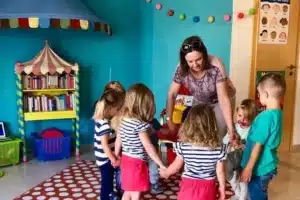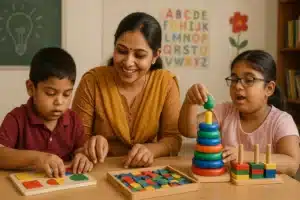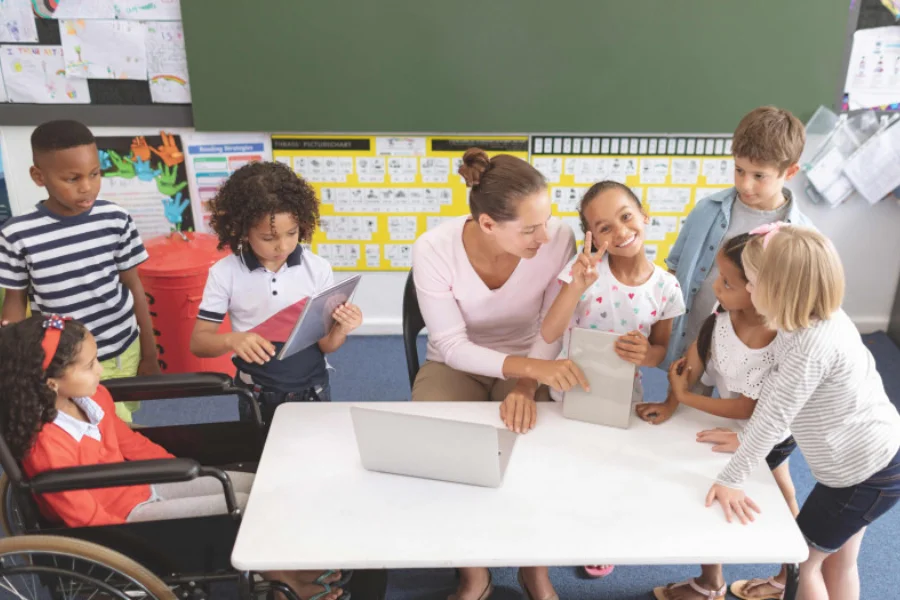
Source: istockphoto
Dyspraxia, commonly known as Developmental Coordination Disorder (DCD), affects motor coordination, causing difficulties with everyday tasks for individuals. Educators are key in recognizing and supporting students facing these challenges, and targeted training provides them with specialized training and useful techniques.
Dyspraxia courses focus on addressing motor coordination challenges, helping educators adapt their teaching methods to create inclusive classrooms. Vidhyanidhi Education Society (Govt. Regd.) offers an LD course that covers essential aspects of supporting students with learning and coordination difficulties, ensuring teachers are well-prepared to meet diverse needs. Through Dyspraxia courses, educators can gain valuable insights into fostering skill development and boosting student confidence.
Is Dyspraxia a Learning Disability?
The question “Is Dyspraxia a Learning Disability?” is hard to answer because it is not formally considered a learning disability. Also called as Developmental Coordination Disorder (DCD), dyspraxia mainly affects how a person moves and organizes things, not how they think. This makes dyspraxia unique because it affects learning skills without reducing a person’s intelligence.
Knowing Dyspraxia
A Concealed Disability: Dyspraxia is often called as hidden disability because its physical signs are not easy to identify. Unlike more obvious disabilities, the challenges of dyspraxia, like poor motor coordination and clumsiness, may not be obvious.
Misconceptions and Overlooked: Because Dyspraxia is less well known than other disorders and therefore it is often misunderstood. Many people with dyspraxia stay undiagnosed well into adulthood, believing their fights are due to regular clumsiness or personal limitations. The lack of cognizance often delays appropriate intervention and care.
Impact on Learning
Even though dyspraxia does not impact intelligence, its effects can ultimately make learning more difficult.
For example:
Motor Skill Challenges
Activities requiring fine motor skills, like writing, cutting, or using equipments, can be problematic and arduous for children with dyspraxia.
Organizational Difficulties
Dyspraxia can influence an individual’s skill to organize, categorize, and execute tasks, making classroom activities like writing notes or project preparation particularly overwhelming.
Processing Delays
Some persons may need extra time to process information or complete coursework, which can create hindrances in fast-paced learning settings.
Path to Skill Development
In spite of these challenges, individuals with dyspraxia can achieve significant progress with the right approaches and support systems. They often learn skills at their own step and succeed in surroundings that offer patience and understanding. Customized interventions and modified teaching approaches can make a substantial transformation in their skill to flourish.
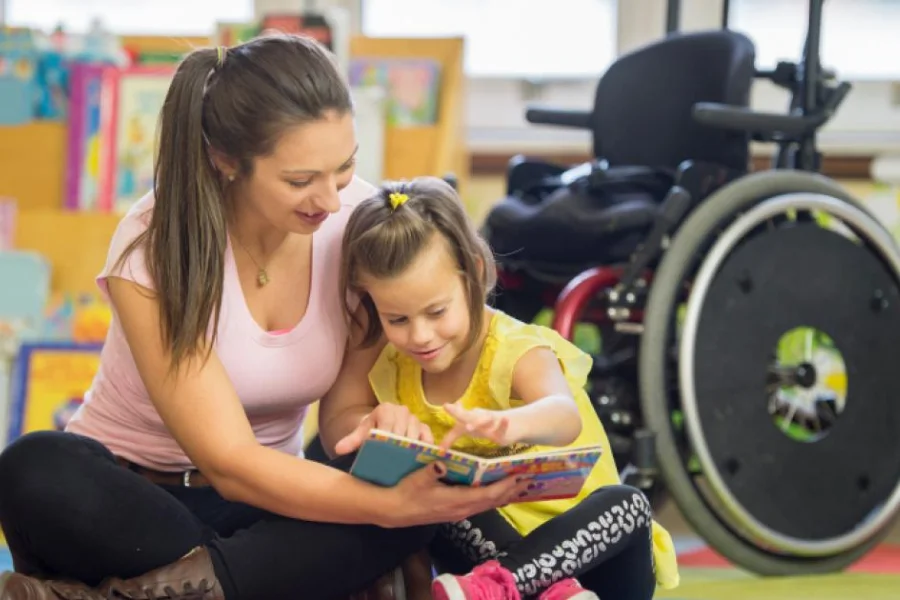
Source: istockphoto
Significance of Dyspraxia Courses for Teachers
It is essential for instructors to comprehend dyspraxia in order to offer appropriate assistance to students experiencing these challenges. Specialized Dyspraxia Courses offer detailed knowledge about the condition and prepare teachers with practical tools to build an inclusive classroom. .
These courses help teachers:
- Identify early signs of dyspraxia.
- Adapt teaching methods to support students with motor coordination difficulties.
- Construct a setting that encourages assurance and self-reliance.
While dyspraxia is not defined as a learning disability, its effect on motor coordination and correlated tasks can lead to significant obstacles in educational settings. Educators can support students encounter these obstacles and help them achieve full potential by increasing their awareness of dyspraxia and taking specialized training through Dyspraxia Courses.
What are the Dyspraxia Therapies?
Developmental Coordination Disorder (DCD), alternative name for dyspraxia, can be a reason for serious hitches for people, particularly when it comes to organizing and motor coordination. Directed dyspraxia therapies, however, can boost day to day activities, self-assurance, and motor skills.
The cooperation from parents, teachers, Occupational therapists and caregivers help in executing these therapies.
Here are some of the key Dyspraxia Therapies:
Occupational Therapy
Occupational therapy caters to dyspraxia by using structured activities and methods.
Observation and Assessment
Therapists observe the child during play and formal assessments to evaluate their abilities in gross motor tasks and identify areas of difficulty. Recommendations are then tailored for management.
Goal Setting
Functional goals are set collaboratively with the child, parents, and teachers to ensure therapy is focused and beneficial for all involved.
Parent and Teacher Education
Incorporating age-appropriate skills and strategies into the daily lives of kids, their parents, caregivers, and tutors.
Skill Development
These therapies focus on enhancing both gross and fine motor skills.
Physical Skills
Activities are designed to promote physical activity and participation in team or group settings.
Underlying Skills
To promote general motor development, therapists work on abilities like balance, coordination, strength, endurance, attention, and body awareness.
Confidence Building
Kids with dyspraxia tend to shy away from things they think are too challenging.
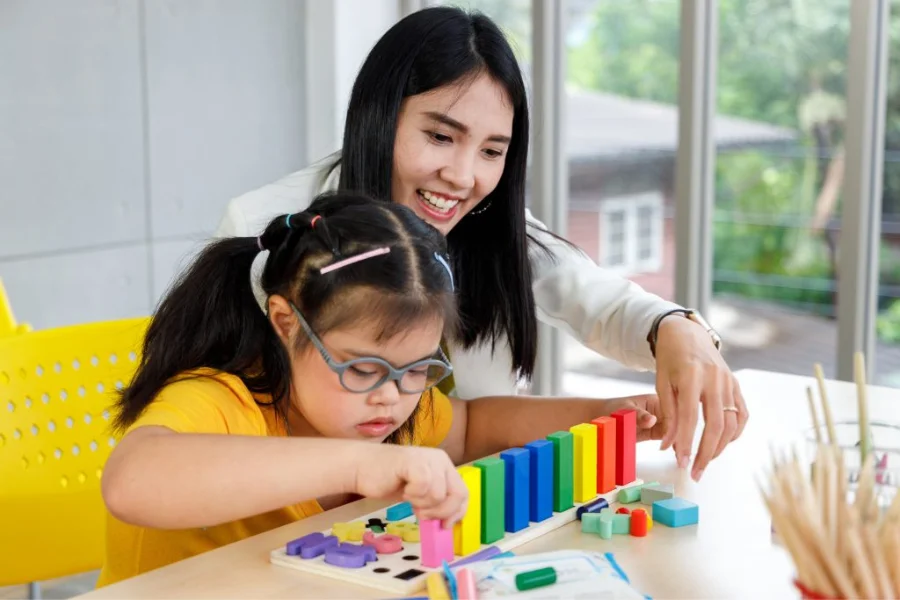
Source: istockphoto
Therapy focuses on:
Simplifying Tasks
Breaking tasks into smaller, manageable steps and gradually building complexity.
Awareness and Strategies
Imparting problem-solving techniques and assisting the child in recognizing their strengths and shortcomings.
Incremental Success
Presenting tasks at the “just-right challenge” level, ensuring success before increasing difficulty.
Multi-Sensory Approach
Therapists use multi-sensory techniques to enhance skill acquisition.
Sensory Processing
Improving sensory input and awareness to ensure accurate movement planning and body control.
Visual and Physical Modelling
Using non-verbal cues, such as visual instructions and hands-on guidance, to help children understand and replicate movements.
Task-Based Learning
Breaking down difficult physical skills (e.g., skipping) into step-by-step components.
Repeating tasks in various atmospheres, like home, school, and therapy sessions, to shape mastery.
Teachers have a significant impact on helping kids with dyspraxia. Specialized Dyspraxia Courses prepare teachers with the skills to understand and apply these beneficial techniques effectively. These courses provide practical policies to make an inclusive and supportive learning atmosphere.
By integrating the strategies outlined in Dyspraxia Therapies, kids with dyspraxia can gain the confidence and skills needed to succeed in daily life and educational surroundings.
Empower young minds by mastering strategies! Join Vidhyanidhi Education Society’s LD Course today!
For more details on the LD Course Call/Whatsapp at +919321024137 / +919869866277
To download the brochure of the LD Course, Click Here!
FAQs
How Teachers can Help Struggling Learners?
Teachers can aid struggling learners by offering personalized strategies, fostering confidence, and creating an inclusive environment. Vidhyanidhi Education Society offers an LD Course to help educators excel.
Is Dyspraxia Curable?
It can be minimized with upkeep, skill improvement and therapy, helping individual’s to enrich their day to day activities and coordination.
Is Dyspraxia a Lifelong Disability?
A lifelong condition like Dyspraxia can be minimized through regular interventions and approaches, leading a prosperous and satisfying life.


